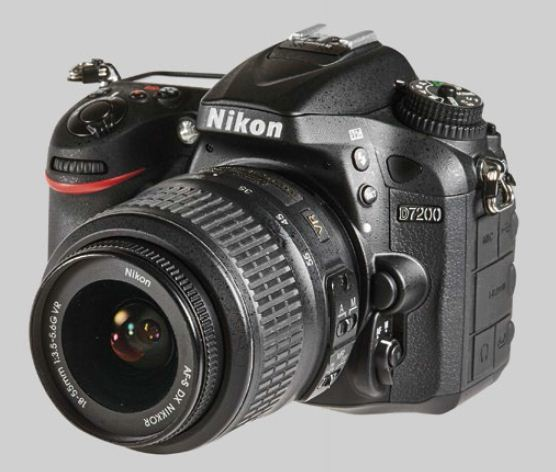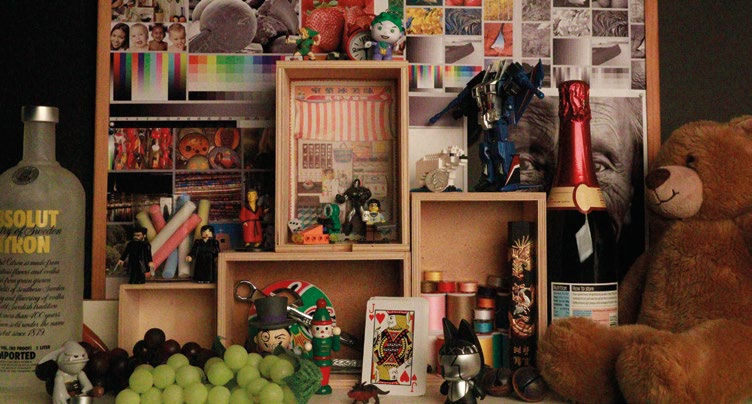Top-of-the-line cameras with the latest technologies are normally out of reach of the average consumer. Give it a year or so though, and their features trickle down to the mid-range models, making these the ideal balance of performance versus value.


Top-of-the-line cameras with the latest technologies are normally out of reach of the average consumer. Give it a year or so though, and their features trickle down to the mid-range models, making these the ideal balance of performance versus value.

CANON EOS 760D
The EOS 760D replaces last year’s EOS 700D as the most advanced consumer level camera in Canon’s stable. It was released together with the EOS 750D, which shares the same sensor and most of the capabilities but has slightly less controls, and costs less at just $949.
They both have Canon’s new 24.2-megapixel APS-C sensor and DIGIC 6 processor, which allows them to hit a maximum continuous shooting rate of 5fps, and go to an ISO sensitivity level of 25,600, as well as Wi-Fi connectivity and NFC pairing, but the EOS 760D comes with a touch-sensitive, fully articulating rear LCD and a top LCD info display, as well as an extra rotating control dial at the rear.
We like the implementation of the rear LCD with touch in the EOS 760D, as that gives you added versatility in terms of shooting angles, and makes it easier to dive through menus for the various settings. Used together with the Quick Control button, it pulls up a menu that puts all settings from shutter speed to aperture, ISO and even compensation and fl ash modes at your fingertips.
Also, being able to swing the LCD panel out fully and rotate it up or down certainly makes composition easier when shooting from down low or when you need the camera above eye-level. Meanwhile, that extra rotating dial also means that you can have one physical dial for aperture and another for shutter instead of having to hold buttons to alternate between the two functions.
Overall, the EOS 760D is a nice, compact camera overall that fits nicely into your hand. Measuring 131.9x 100.9 x 77.8mm, it isn’t that much larger than some of its mirrorless counterparts, but at 520g (body only) weighs a fair bit more. Thankfully though, the handgrip on the body is deep enough to allow you to really wrap your fingers around the camera, giving you a more stable grip that you need with heavier lenses.
Flip out touch screen is a nice addition.
Images tend to be very warm.



FUJIFILM X-T10
We’ve long regarded the X-T10 as a value performer, considering it takes so much from Fujifilm’s flagship X-T1 model while costing quite a bit less. The 16-megapixel X-Trans CMOS II sensor and EXR Processor II make its way into this midrange model, as does the Intelligent Hybrid AF system that combines the speed of Phase Detection AF with the Low Light performance of Contrast AF.
The X-T10 is slightly lighter than its older sibling at 331g, and at 118.4 x 82.8 x 40.8mm, slightly smaller too. This makes it one of the smallest in this shootout, and a very compact camera overall considering it holds a larger APS-C sensor within.
As with all mirrorless cameras, a key feature is the electronic viewfinder (EVF), and the X-T10 doesn’t disappoint there, as the lag time is on par with the X-T1 at just 0.05 seconds, giving you one of the more responsive EVFs in the market. This means you can run this camera at full burst in continuous high mode (the X-T10 does 8 fps) and still see exactly what’s happening in the viewfinder because the EVF refresh rate is keeping up and not blacking out. That used to be a bugbear for people coming over from traditional viewfinders, but certainly shouldn’t be an issue with this camera.
The X-T10 is also one of the most customizable cameras in this shootout, with no less than 27 options that can be assigned to the quick menu. That makes changing settings quick and easy, as your most used functions can now be one click away. Speaking of making things easy, there’s also an added switch on the camera that puts it in “Auto” mode (or Advanced SR Auto mode as Fujifilm calls it). Fujifilm explains this as a provision for the times when you want to hand the camera to someone else to quickly take a photograph for you, yet want to be certain the photo will at least be properly exposed.
Good feature set inherited from the higher end X-T1.
Buffer for continuous capture is too small.



NIKON D7200
The Nikon D7200 builds on the D7100 by adding improved Wi-Fi with NFC capabilities, better battery life and 60p video. It also has time-lapse capabilities, and gets the same EXPEED 4 image-processing engine and Advanced Multi-CAM 3500 II autofocus sensor as the full-frame D750, making it quite the capable camera (at least on paper).
It also gains a slight resolution bump with 24.2 million pixels compared to 24.1 million on the D7100. Owing to these improvements, the camera has a continuous rate that goes up to 6fps, and a bigger buffer that Nikon says allows for continuous capture of up to 100 shots (at JPEG Fine). It also has an ISO range of 100 to 25,600, up from the previous high of 6400 in the older camera.
Unlike the other cameras in this shootout, the D7200 is still stuck with a fixed rear LCD. It isn’t touch sensitive either, so you don’t get the advantage of being able to tilt your screen for awkward angles, nor do you get faster navigation via touch, much less the option to shift your AF point via touch a la the D5500 that was released earlier. Personally, we think that’s a bit of a pity as these are usability features that are pretty much par for course today.
What’s nice though, are its improved movie functions. The D7200 now allows you to set microphone sensitivity, frequency response, and gives you the option to enable wind noise reduction, as well as highlight display; all welcome features for movie-makers.
The inclusion of dual card slots are also a welcome feature as you can then choose to use one card for stills and the other for video, or both for video in the overflow setting. This gives you better provision for shooting more takes, giving you more options later. The D7200 has a CIPA rating of up to 1,100 frames on a single battery, so you be assured the battery life will match up to the storage capacity.
Good provision for extended shooting sessions with dual card slots and great battery life.
Camera interface feels dated .



OLYMPUS OM-D E-M5 MARK II
OM-D EM-5 Mark II is a welcome update to the popular OM-D EM-5, with the headlining features being an improved 5-axis in-body image-stabilization system, a flip-out, tilt/swivel LCD, and the inclusion of a 40-megapixel High-Res Shot mode that mostly benefits still product shooters as the subject has to stay still throughout the capture.
It retains largely the same design as the original, with the exception of the size of some of the dials, and slight changes to the proportions of the body. The grip is slightly larger than before, and the camera now feels extremely solid overall; as though it was made from a single piece of metal. Olympus says the camera is also dust-proof, splash-proof and freeze-proof, making for a system that you can really feel confident bringing with you to any situation.
There have also been improvements to the EVF and the touchscreen. The EVF has a 2.36M dot LCD, while the 3.0” touchscreen has 1.04M dots, both almost double the resolution of the previous model.
Customization is another a key improvement here, as there are also a lot more function buttons available for you to repurpose: four dedicated Fn buttons (from Fn1 to Fn4), the movie REC button, the Preview button and even the Down and Right buttons on the four-way directional controller can be reassigned, so you can customize the layout of your controls and then some. Certainly, the OM-D EM-5 Mark II seems to be most customizable camera of the lot.
Unique to the camera, is a 2x2 control lever that switches the functions assigned to the main control dials. This can be assigned to toggle between shutter/aperture and ISO/WB for example, and can again be customized to your personal preference, but can also be a little confusing if you lose track of what the dial is set to. An icon indicating the current active settings would definitely be most appreciated, but this approach seems a good way to maximize the limited space available on the camera.
In-body image stabilization system is largely improved.
Control lever could be better implemented.



SAMSUNG NX500
At first look, the NX500 looks exactly like any of the other low-end cameras in Samsung’s line-up, and you could easily be forgiven for not being impressed by the average looks of it. But what it hides within though, is the same 28.2-megapixel BSI APS-C sensor, DRIMe Vs image processor, and NX AF system III that was first debuted in the company’s flagship NX1 camera.
The NX500 also retains the ability to capture true 4K (4,096 x 2,160 pixels) video using the new HEVC (H.265) codec, as well having built-in wireless and a 3-inch tilting touchscreen. Battery life is respectable at 370 shots given it doesn’t have a viewfinder, but you lose the top LCD and microphone/headphone port that you find on the NX1. A word about the 4K capture, notable because the NX500 will record 4K internally without the need of any external device.
That gives filmmakers a great budget option for extra angles that should be easy to mount in all sorts of locations due to its small size and light weight. Event photographers may also find it a good second camera given its relatively fast continuous burst rate of 9fps and top shutter speed of 1/6000s. The only complaint may be that the two main control dials for shutter and aperture are relatively small, making it hard for bigger hands to operate.
Honestly speaking, we found ourselves adjusting most settings via the Fn menu using the touchscreen. We really like this menu, as it literally puts all the settings at your fingertips thanks to the touch screen. That and the speedy processor makes for a very responsive camera. The rear LCD flips up a full 180-degrees and down 45-degrees, making it easy to use both overhead and below.
Something you might also find handy if you’re uploading images direct from camera a lot is that the NX500 has image-editing tools that let you adjust brightness, contrast, saturation and more right all from within the camera.
Great menu system with plenty of features easily accessible.
No viewfinder of any sort.



IMAGE QUALITY & PERFORMANCE - CANON EOS 760D
The EOS 760D is in generally a fairly snappy camera, with a good focusing system that remains decently accurate even in low light. However, compared to the other cameras in this shootout, we found that images captured were slightly soft. Despite being rated for 95% coverage, the viewfinder felt like it was the darkest of the group, and so didn’t feel like the best to compose with. It also seems as though the exposure system tends to try very hard to preserve highlights, resulting in images that look severely underexposed. More troublesome though, is the fact that a significant amount of color noise shows up from ISO 3200 onwards, making images taken at ISO 6400 and above largely unusable. That’s really quite a pity, as the images seemed to still hold detail well.


IMAGE QUALITY & PERFORMANCE - FUJIFILM X-T10
We’ve always enjoyed taking pictures with the X-T10, and that’s because of the responsiveness of the camera – from the menu systems and controls down to the speedy autofocus and the 8fps continuous shooting frame rate. That last point however comes with a big caveat, as the X-T10’s buffer is just 8 frames – exactly the maximum amount the camera can take. This means you have to time your shots really well because there will be a bit of lag between bursts. That aside, the autofocus system certainly is one of the better ones available; once we worked out which mode to use and how to adjust the focus point appropriately. Strangely though, the auto white balance doesn’t quite seem to handle tungsten light that well as that was the only instance wherein our pictures were overly orange.


IMAGE QUALITY & PERFORMANCE - NIKON D7200
The thing that stood out the most for the D7200 in this shootout was the incredible battery life. Certainly, it was the one camera that kept on going when the rest were almost flat. The camera turned in good autofocus performance, and the combination of having a shutter that maxes out at 1/8000s and a buffer that allows the camera to take up to 100 shots in JPEG meant we were really able fire away to catch the shot. We found that the camera also tends to underexpose to preserve images, but only by about half a stop, which leaves a more acceptable image compared to the Canon 760D. Unfortunately, it shares the Canon 760D’s problem – images are fairly noisy compared to the others at ISO levels above 6400, with noticeable color noise from 12,800.


IMAGE QUALITY & PERFORMANCE - OLYMPUS OMD E-M5 MARK II
One of the biggest improvements for this camera is the improved 5-axis in-body image stabilization that works in both stills and videos, and it certainly showed. The effects were more obvious with video than with stills (we only managed handholding up to 1/13s for stills capture), but the fact that you get this capability with every lens placed on the body is certainly a boon. Autofocus accuracy does take a bit of hit in lowlight though, as we found the camera would tend to hunt more, but in good light it’s certainly every bit as fast (and accurate) as the others. One thing that did surprise us though, was that the high ISO performance turned out to be one of the best of the group, as the sensor held detail well up to ISO 6400.


IMAGE QUALITY & PERFORMANCE - SAMSUNG NX500
The NX500 has perhaps the best overall feature set, with great tools for both stills and video. The camera does a pretty good job with colors as the auto white balance is generally spot on, and the auto exposure system also seemed to be pretty accurate, as no additional adjustments were needed in post. One thing we did find though, is that the autofocus slows down noticeably in low-light despite the camera having the most AF points of the group to draw from. Still, images captured have good detail and contrast from the lower ISO levels all the way up to ISO 6400, after which the incredibly over-aggressive noise reduction blurs everything into mush, which is a real pity because there is good detail to be had from the BSI sensor.




AND THE BEST MID-RANGE INTERCHANGEABLE LENS CAMERA IS

FUJIFILM X-T10
To be honest, we were expecting this to go to one of traditional DSLRs given their respective feature sets, but the X-T10 proved once again that it’s not just about pixel counts when it comes to making good images. Images taken at ISO levels up to 12,800 are very usable, while those taken at ISO 25,600 can also be used after a bit of sharpening so that certainly increases the number of situations whereby the camera can get you images. Apart from the incredibly small buffer for continuous capture, there’s little we would change given the price, and even then it’s one of the cheaper options. So, take good handling paired with great image performance and good value, and you have yourself an easy winner.
SAMSUNG NX500
We really shouldn’t be surprised by the performance of this camera given that it’s largely based on the NX1. Still, the value Samsung managed to squeeze into the NX500 makes it stand out well compared against many of its more established competition. Images taken with the NX500 have good detail and look great straight out of camera. If it was sold as a body-only set, it would make it a no-brainer purchase, but certainly for a complete system (with a kit lens) retailing for under $1,200 that turns in this level of performance out of the box, you’ll be hard pressed to find a better value performer.























